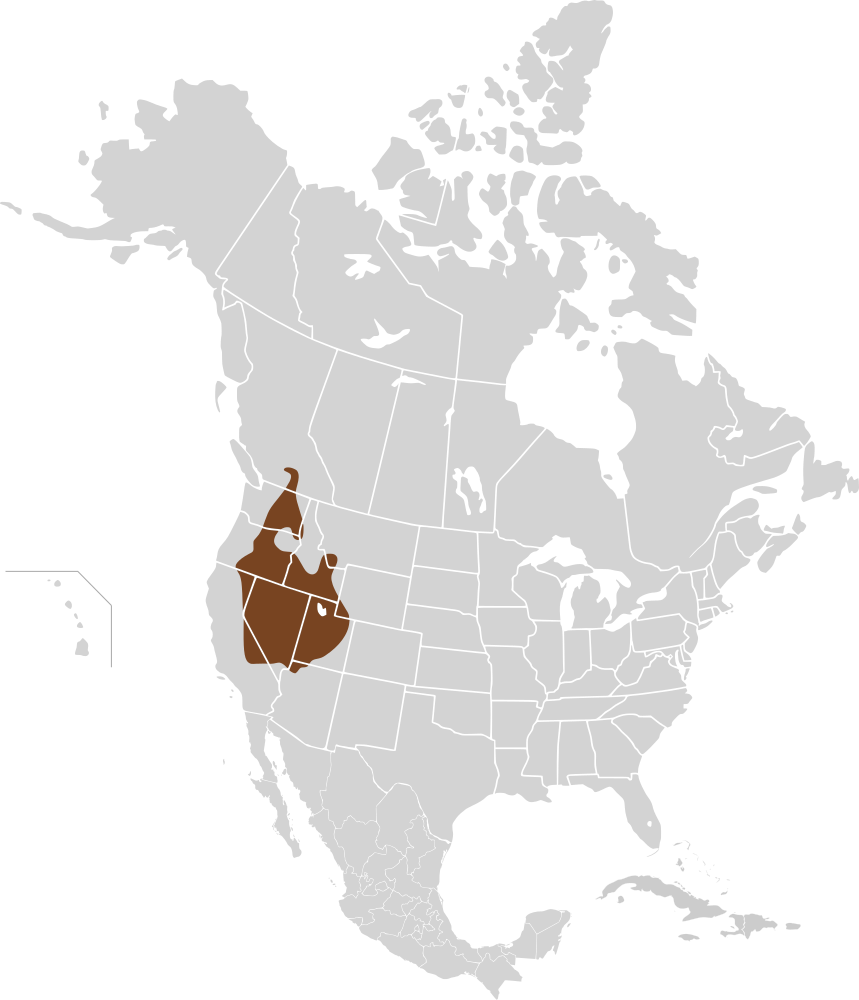It is hard to guess what a Great Basin pocket mouse weights. But we have the answer:
An adult Great Basin pocket mouse (Perognathus parvus) on average weights 21 grams (0.05 lbs).
The Great Basin pocket mouse is from the family Heteromyidae (genus: Perognathus). It is usually born with about 1 grams (0 lbs). They can live for up to 4 years. When reaching adult age, they grow up to 8.1 cm (0′ 4″). On average, Great Basin pocket mouses can have babies 2 times per year with a litter size of 4.
As a reference: An average human weights in at 62 kg (137 lbs) and reaches an average size of 1.65m (5′ 5″). Humans spend 280 days (40 weeks) in the womb of their mother and reach around 75 years of age.

The Great Basin pocket mouse (Perognathus parvus) is a species of rodent in the family Heteromyidae. It is found in British Columbia in Canada and the western United States.
Animals of the same family as a Great Basin pocket mouse
We found other animals of the Heteromyidae family:
- Desert pocket mouse with a weight of 15 grams
- San Joaquin pocket mouse with a weight of 10 grams
- Southern spiny pocket mouse with a weight of 268 grams
- Nelson’s pocket mouse with a weight of 15 grams
- Sinaloan pocket mouse with a weight of 17 grams
- Giant kangaroo rat with a weight of 114 grams
- Spiny pocket mouse with a weight of 16 grams
- Nelson’s spiny pocket mouse with a weight of 67 grams
- Pale kangaroo mouse with a weight of 13 grams
- Gulf Coast kangaroo rat with a weight of 49 grams
Animals with the same weight as a Great Basin pocket mouse
As a comparison, here are some other animals that weight as much as the Perognathus parvus:
- Carriker’s round-eared bat bringing 22 grams to the scale
- Golden mouse bringing 22 grams to the scale
- Mottled-tailed shrew mouse bringing 18 grams to the scale
- Oligoryzomys microtis bringing 22 grams to the scale
- Monte gerbil mouse bringing 18 grams to the scale
- Ruwenzori shrew bringing 18 grams to the scale
- Western red-backed vole bringing 18 grams to the scale
- Drylands vesper mouse bringing 20 grams to the scale
- Thespian grass mouse bringing 24 grams to the scale
- Northern short-tailed shrew bringing 18 grams to the scale
Animals with the same size as a Great Basin pocket mouse
Not that size really matters, but it makes things comparable. So here are a couple of animals that are as big as Great Basin pocket mouse:
- Julia Creek dunnart with a size of 9.5 cm (0′ 4″)
- Narrow-skulled pocket mouse with a size of 8.8 cm (0′ 4″)
- Parantechinus bilarni with a size of 9.6 cm (0′ 4″)
- Long-eared flying mouse with a size of 8.7 cm (0′ 4″)
- Jamaican fruit bat with a size of 7.8 cm (0′ 4″)
- Pacific shrew with a size of 7 cm (0′ 3″)
- San Diego pocket mouse with a size of 8.3 cm (0′ 4″)
- Olive-backed pocket mouse with a size of 6.9 cm (0′ 3″)
- Rudd’s mouse with a size of 9.3 cm (0′ 4″)
- Egyptian free-tailed bat with a size of 7.5 cm (0′ 3″)
Animals with the same litter size as a Great Basin pocket mouse
Here is a list of animals that have the same number of babies per litter (4) as a Great Basin pocket mouse:
- European hedgehog
- Creek groove-toothed swamp rat
- Fawn-colored mouse
- Allen’s chipmunk
- Western heather vole
- Akodon boliviensis
- Bushveld gerbil
- Large New Guinea spiny rat
- Woolly dormouse
- Sody’s tree rat
Animals with the same life expectancy as a Great Basin pocket mouse
Completely different animals, but becoming as old as a Great Basin pocket mouse:
- Forest dormouse with an average maximal age of 4 years
- Raffray’s bandicoot with an average maximal age of 3.25 years
- Small Japanese mole with an average maximal age of 3.5 years
- Great gerbil with an average maximal age of 4 years
- Japanese shrew mole with an average maximal age of 3.5 years
- Yellow-faced pocket gopher with an average maximal age of 4.67 years
- Kultarr with an average maximal age of 3.25 years
- Acacia rat with an average maximal age of 3.5 years
- Greater cane rat with an average maximal age of 4.25 years
- Northern birch mouse with an average maximal age of 4 years
